A place of contradictions
Monastery of Montserrat - Symbol of Catalonia
It is doubtlessly one of the symbols of Catalonia, a place that you must not omit to see if you happen to spend some days in this region. It is said to be the second most visited sanctuary in Spain after Santiago de Compostela. It benefits come from a spectacular natural environment, which makes it really unique in its kind, and from a fascinating history.
And yet, my first impressions after visiting the monastery of Montserrat and its surroundings were probably disappointment rather than awe, bewilderment rather than spiritual elevation. The problem is probably that I was expecting to find a special atmosphere, a sacred place, while Montserrat is currently a mainly touristic resort, having lost most of its original charm. But of course, the fact of appreciating or not a new place, always depends on anyone's tastes and expectations!
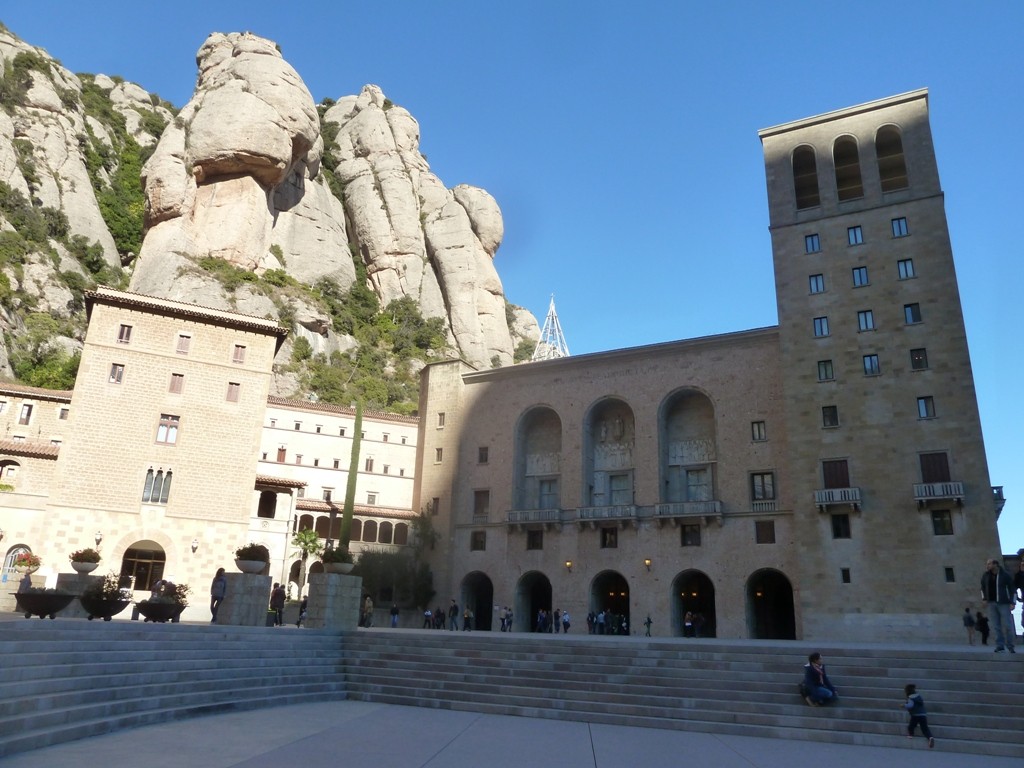
Second most visited Place of Worship in Spain
Anyhow, I should have probably better gone in order and explain in the first place what monastery of Montserrat is, or at least what it is supposed to be. As I was saying, this monastery, located in the heart of a spectacular mountain range, from which it takes its name, is the second most visited place of worship in Spain. Located about 50 kilometers to the north-west from Barcelona, it reaches back to the 11th century and has a fascinating history behind. Indeed, the object of the religious veneration is a wooden statue of the Virgin, called Virgen de Montserrat or La Moreneta, due to its dark colour. According to the tradition, this simulacrum was carved by Saint Luke and hidden in the mountains of Montserrat by Saint Peter, in order to protect it from the Moors. Having been found by a group of shepherds towards the end of the ninth century, it was then preserved in the monastery that was built a couple of centuries later, and soon converted into the object of a wide veneration.
So far, so good: a monastery with long history, a charming sacred statue (Virgin of Montserrat has become the saint patron of Catalonia), a wonderful natural environment. Therefore, what is wrong with Montserrat? The problem is, at least for me, the shameful transformation of this place due to, as usual, the craving for money, which too often characterizes human actions. Far from being preserved in its original beauty, the charm of monastery of Montserrat and of its surroundings has been spoilt by a process of cruel building techniques and tourism exploitation.
Indeed, after taking pleasure during a delightful climbing to the place where the monastery is located (about 700 metres above sea level), the visitor is not welcomed by a quiet and breathtaking view, but rather by the awful sight of a series of ugly and unpleasant concrete buildings. A wide car park, the upper station of the funicular railway, a restaurant, a hotel, a tourist office... in a nutshell: an endless series of constructions, which prevent the visitor from appreciating the landscape and enjoying the (supposed) sensation of spiritual elevation.
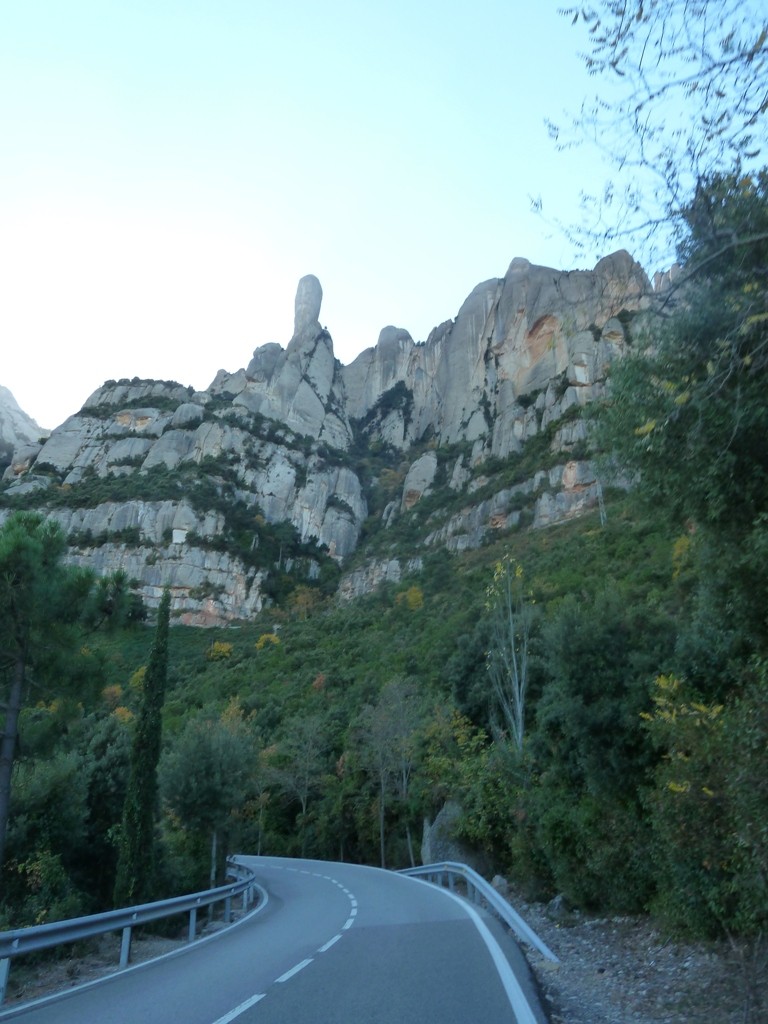
Touristic Attractions
Of course, all these touristic facilities, together with the above mentioned funicular railway and the aerial cableway, which allow people to get to the monastery without much effort, make the place really comfortable for tourists. As a result, a lot of people usually crowds Montserrat in the sunny weekends, making it even more difficult for visitors to appreciate the atmosphere. At least, in my view, things could have been arranged in a far better way, but as the proverb goes... money matters!
At any rate, as there is no room for regrets anyway, the best thing to do is trying and pointing out the positive sides of Montserrat, which in fact are still quite consistent. Indeed, once going through the above mentioned series of building, the lane leading to the monastery is found. Of course, the original building has been replaced by an imposing church. Needless to say, an entrance fee (6 Euros) has to be paid to enter the sanctuary, where La Moreneta is preserved. A similar price is required to visit the nearby Museu de Montserrat, which I have not personally visited, but it contains an interesting series of sacred icons, altarpieces and paintings. A good way to appreciate (or at least try to do so) the visit is to get to the sanctuary quite early in the morning, before the arrival of most of the tourists.
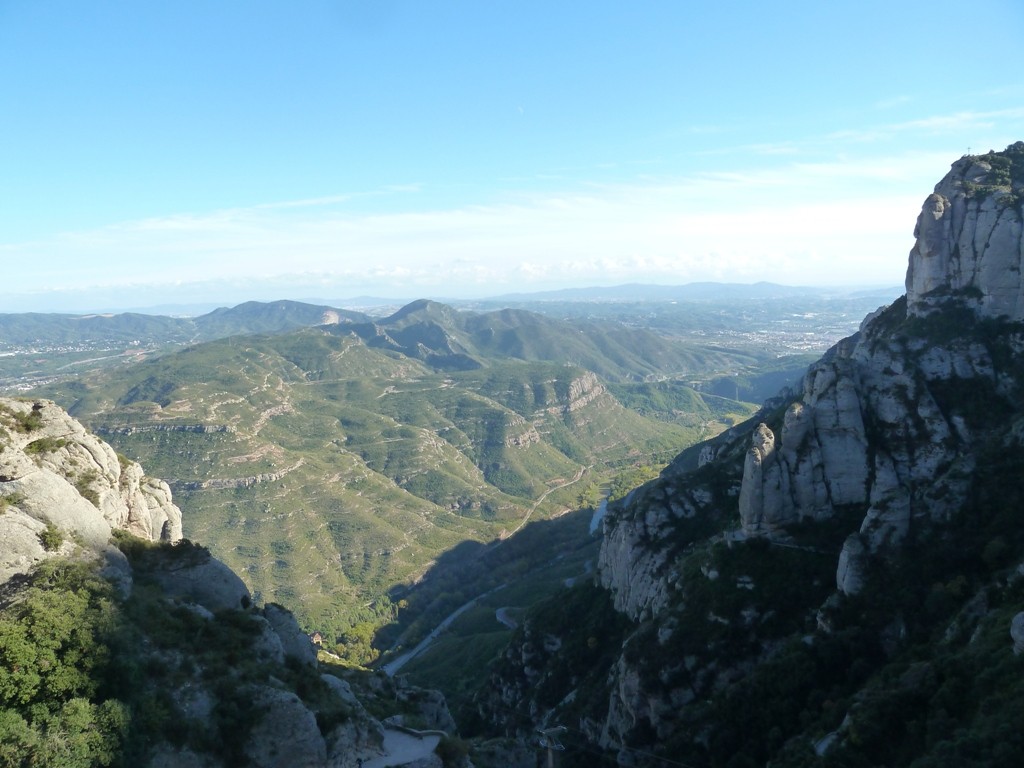
Santa Cova
However, the sanctuary is probably not (or not any more) the most fascinating part of the visit to Montserrat. In order to find some of the lost charm of the place, it is possible to reach the place where La Moreneta was originally found, called Santa Cova, where now a small chapel and a duplicate of the statue are located. Although a trip with the cable way is available also in this case, it is probably worth walking along the path that offers spectacular views on the surrounding mountains. Another series of paths also leads to the peaks overlooking the monastery (about 1, 000 metres above sea level), the highest of which is called Sant Jeroni. Having reached Montserrat by bike, I was unfortunately not able to try this part of the experience, which probably represents the only way to stand apart from the touristic crowd.
Photo gallery
Content available in other languages
- Français: Un endroit plein de contradictions
- Italiano: Un luogo di contraddizioni
- Polski: Miejsce sprzeczności
- Español: Un lugar de contradicciones
- Türkçe: Çelişkilerin yeri
- Português: O lugar das contadições
- Deutsch: Ein Ort voller Widersprüche
Un luogo di contraddizioni
Indubbiamente è uno dei simboli della Catalogna, un luogo che non si può non visitare se ci si trova a passare alcuni giorni in questa regione. Si dice che sia il secondo santuario più visitato di Spagna dopo Santiago. Lo spettacolare ambiente naturale circostante e una storia affascinante lo rendono davvero unico. Eppure, le mie prime impressioni dopo aver visitato il monastero di Montserrat e quanto lo circonda sono state probabilmente più di delusione che di meraviglia, più di perplessità che di elevazione spirituale. Il problema, con ogni probabilità, risiede nel fatto che mi aspettavo un'atmosfera speciale, un luogo sacro, mentre Montserrat è al giorno d'oggi più che altro una località turistica che ha perso buona parte del suo fascino originale. Ma di certo il fatto di apprezzare o meno un luogo dipende dai gusti e dalle aspettative di ciascuno!
In ogni caso, meglio probabilmente andare per ordine e spiegare, in primo luogo, cos'è Montserrat, o almeno cosa dovrebbe essere. Come stavo dicendo, questo monastero, situato nel cuore della spettacolare catena montuosa omonima, è il secondo luogo di culto più visitato in Spagna. Ubicato una cinquantina di chilometri a nord-ovest di Barcellona, risale al XI secolo ed ha alle spalle una storia affascinante. L'oggetto della venerazione religiosa, infatti è una statua di legno della Madonna, chiamata "Virgen de Montserrat" o la "Moreneta" ("La Morettina"), a causa del suo colore scuro. Secondo la tradizione, il simulacro fu scolpito da San Luca e nascosto tra le montagne di Montserrat da San Pietro per proteggerlo dagli Arabi. Una volta trovata da un gruppo di pastori verso la fine del IX secolo, fu conservata poi nel monastero costruito un paio di secoli più tardi, diventando subito l'oggetto di una grande venerazione.
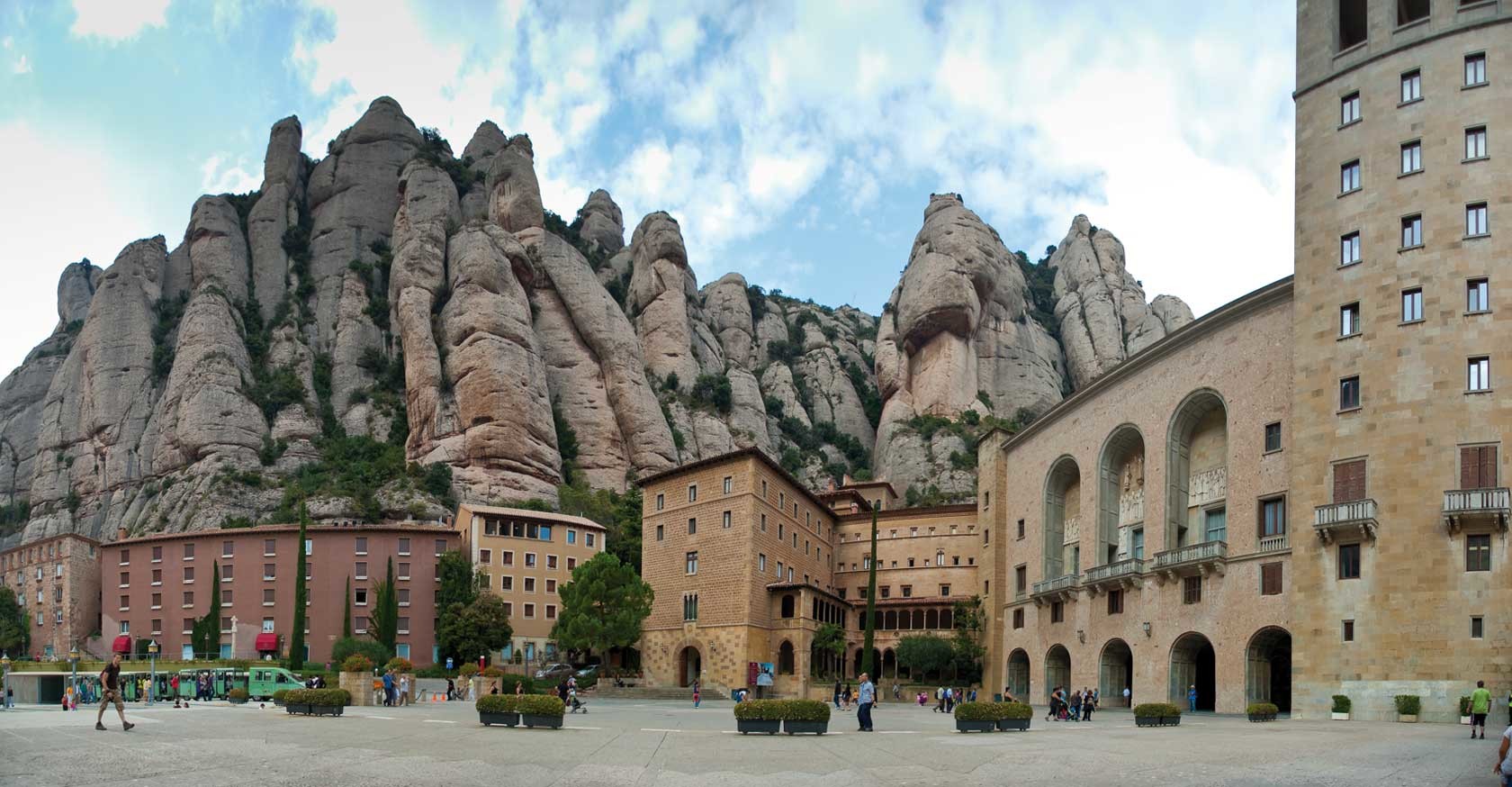
E fin qui, tutto bene: un monastero con una storia centenaria, una misteriosa statuetta sacra (che è diventata la patrona di Catalogna), un ambiente naturale meraviglioso. Qual è dunque il problema a Montserrat? Almeno per quanto mi riguarda, il problema è la disgraziata trasformazione a cui è stato sottoposto il luogo, a causa, come sempre in questi casi, della brama di denaro che troppo spesso caratterizza le azioni umane. Tutt'altro che preservato nella sua originale bellezza, infatti, il monastero di Montserrat ed i suoi dintorni sono stati guastati da un processo di costruzione selvaggia e sfruttamento turistico. Dopo una piacevole scalata fino al luogo in cui è situato il monastero (a circa 700 metri sul livello del mare), infatti, il visitatore è accolto non da un panorama tranquillo e meraviglioso, quanto bensì dalla spiacevole vista di un'orribile serie di edifici in cemento assai bruttini. Un ampio parcheggio automobilistico, la stazione superiore della funicolare, un ristorante, un hotel e un ufficio turistico completano lo scempio...insomma, una serie infinita di costruzioni che impediscono al visitatore di apprezzare il paesaggio e godersi la (supposta) sensazione di elevazione spirituale.
Ovviamente tutte queste attrezzature turistiche, insieme alla suddetta funicolare ed alla funivia che permettono alla gente di raggiungere il monastero senza grossi sforzi, rendono Montserrat un luogo assai comodo per i turisti. Di conseguenza, torme di gente sono solite invadere Montserrat nei fine settimana di sole, rendendo ancora più difficile per i visitatori il tentativo di apprezzarne l'atmosfera. Almeno dal mio punto di vista, le cose avrebbero potuto essere organizzate in modo assai migliore, ma come recita un noto detto inglese... i soldi contano!
Ad ogni modo, dato che ormai non c'è più spazio per i rimpianti, la cosa migliore da fare è cercare di sottolineare gli aspetti positivi di Montserrat, che di fatto sono ancora considerevoli. Una volta superata la suddetta serie di edifici, infatti, si trova il vialetto che conduce al monastero. Naturalmente, la cappella originale è stata sostituita da una chiesa imponente. Inutile dire che è necessario pagare un biglietto di ingresso (dal prezzo di 6 euro) per entrare nel santuario in cui è conservata La Moreneta. Un prezzo simile è richiesto per visitare il vicino Museu de Montserrat, che personalmente non ho esplorato ma che dovrebbe ospitare una interessante serie di icone sacre, pale d'altare e dipinti. Un ottimo modo per apprezzare il santuario (o perlomeno tentare di farlo) è iniziare la visita di buon mattino, prima dell'arrivo di frotte di turisti.
Tuttavia, il santuario probabilmente non è (o almeno non è più) la parte più affascinante della visita a Montserrat. Alla ricerca di parte del fascino perduto del luogo, infatti, è possibile raggiungere il posto in cui La Moreneta fu originariamente ritrovata, chiamato Santa Cova (Grotta Santa), che ospita ora una piccola cappella ed un duplicato della statua. Benché anche in questo caso sia disponibile una cabinovia per il viaggio, vale probabilmente la pena di andare a piedi lungo il sentiero che offre vedute spettacolari sulle montagne circostanti. Un'altra serie di sentieri sale ai picchi che sovrastano il monastero (a circa 1000 metri sul livello del mare), il più alto dei quali è chiamato Sant Jeroni. Avendo raggiunto Montserrat in bicicletta, sfortunatamente non sono stato in grado di provare questa parte dell'esperienza, che probabilmente rappresenta l'unico modo di sfuggire alla folla di turisti.
Photo gallery
Content available in other languages
- Español: Un lugar de contradicciones
- English: A place of contradictions
Montserrat Mountain
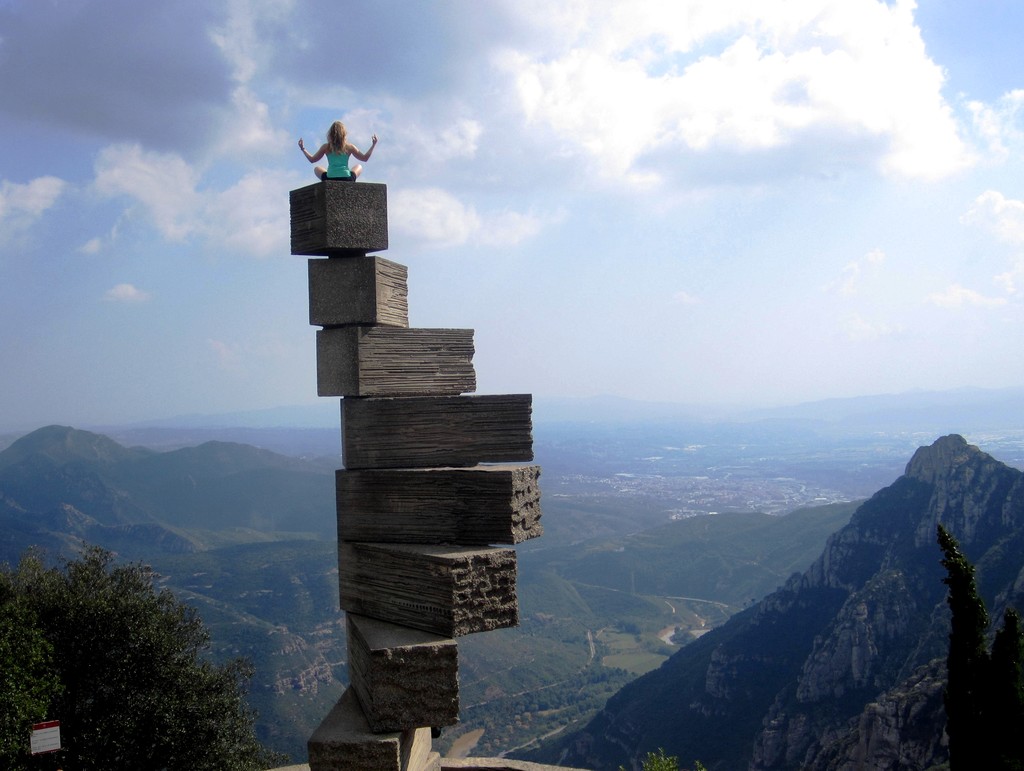
If you want to escape the busy city for a while and enjoy nature at is finest, this is definitely the place to go around Barcelona! Not even one hour outside of the beautiful city you find the unique mountain Montserrat. Situated in a nature resort it is a great place for nature-lover, climbers, hikers and actually everybody else who wants to experience a beautiful view on the province of "Catalunya".
If you hike from the bottom of the mountain it takes you about 2 hours to get to the Benedictan abbey of Santa Maria de Montserrat. It is a wonderful walk through nature, with some steeper parts, but definitely possible for most people, even if you are not used to big hikes or you're not the fittest person on earth. If you are not up to a lot of walking, you can also take a little train that takes you there. For all the really motivated hikers there is more to discover if you continue walking from the abbey to the top of the mountain.
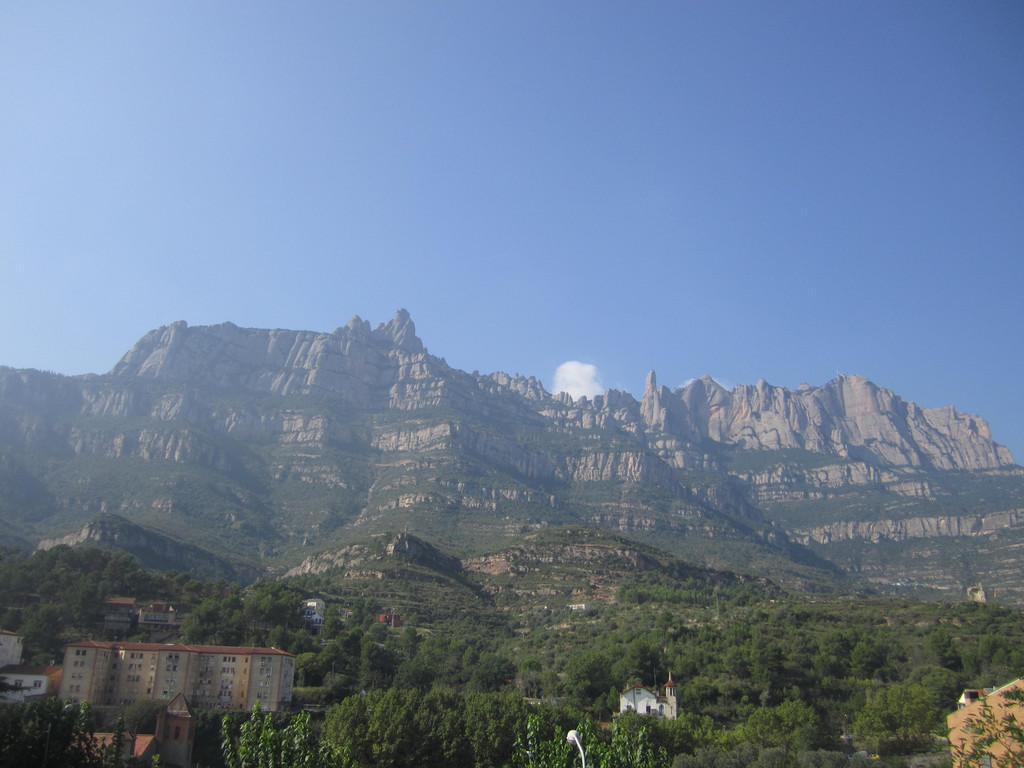
From the top, as well as from the abbey-level you have a breath-taking view, on clear days even till the city of Barcelona and the sea.
An insider tip: If you are brave enough, climb the stone monument at the abbey-level to get an even higher view and to take incredibly cool pictures!
I recommend you to take a day-trip to Monserrat, hike up the mountain, take a long break on the abbey-level, looking around, getting some lunch (and of course most of all: enjoy the spectacular view) then hike down or take the little train and finally make your way back to the city!
Definitely worth a visit if you are spending multiple days in Barcelona!
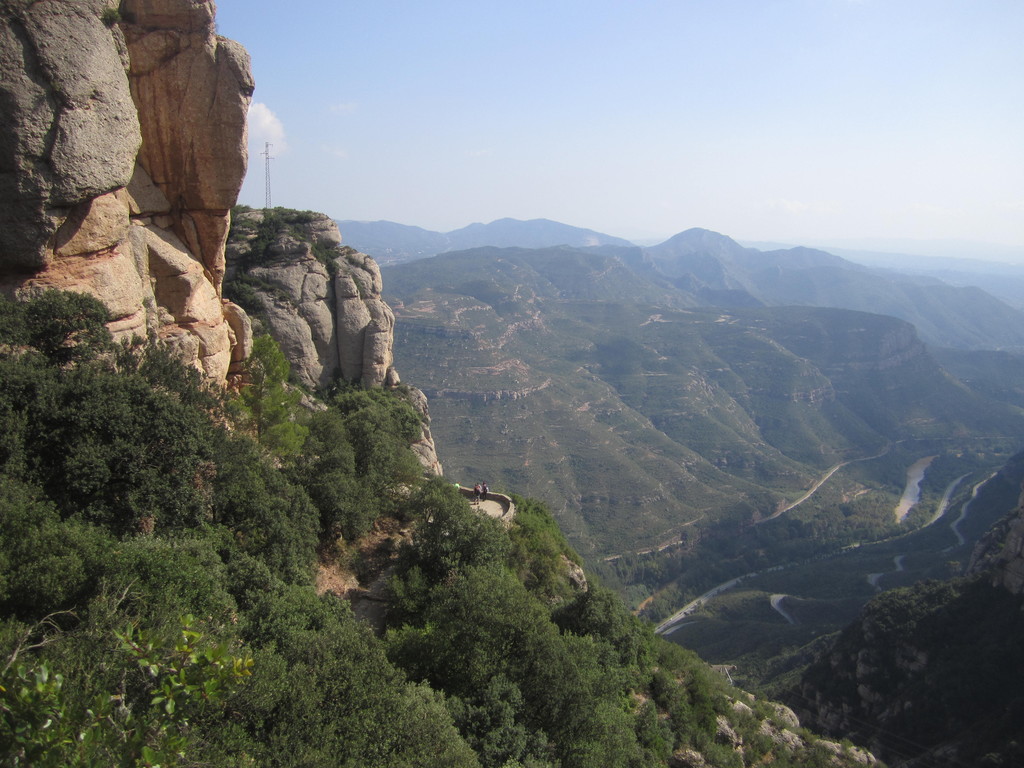
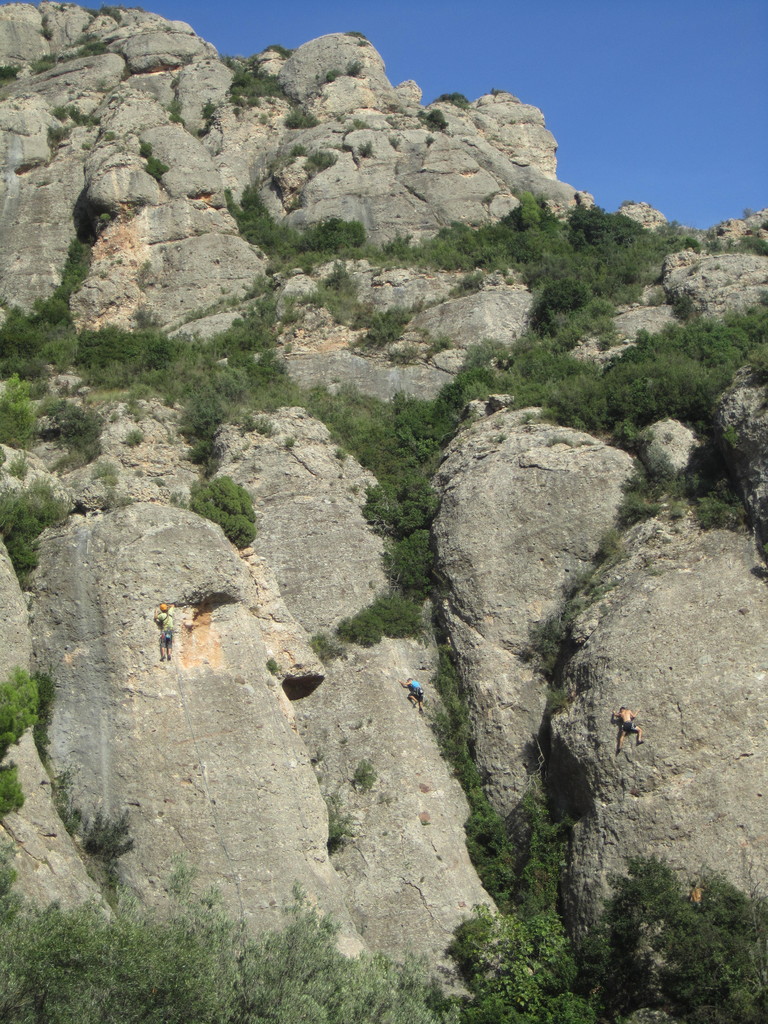
Photo gallery
Content available in other languages
- Français: La montagne Montserrat
- Türkçe: Montserrat Dağı
- Español: Macizo de Monserrat
- Italiano: Montagna Monsterrat
- Polski: Góra Montserrat
- Português: Montanha Montserrat
- Nederlands: Montserrat Berg
- Deutsch: Berg Montserrat
A place of contradictions
Without any doubt, it's one of the symbols of Catalunia, a place that you can't avoid to visit if you are spending few days around this region. People says that it's the second most visited sanctuary in Spain, after Santiago. The amazing natural landscape that surrounds it and its intriguing history makes it really unique. Yet, my first impressions after visiting Montserrat and what surrounds it have probably been more of disappointement than wonder, more of perplexity than spiritual elevation. Most probably, that's because I expected a special atmosphere, an holy place, while nowadays Montserrat is mostly a turistic spot which has lost a big deal of its original fascination. But of course, appreciating a place or not, that depends on one's tastes and expectations!
Anyways, it's probably better proceed with order and explain in the first place what Montserrat is, or at least what is supposed to be. As I was saying, this monastery, located in the heart of the homonymous spectacular mountain chain, is the second most visited holyplace in Spain. Situated about 50km north-west of Barcelona, dates back in the history to the XI century and behind it there's a fascinating tale. The object of religious adoration is actually a wooden statue of vergin Mary, called "Virgen de Montserrat" or the "Moreneta" ("the little brunette"), because of his dark color. According to the tradition, the simulacrum was carved by St. Luca and hidden by St. Peter in the Montserrat Mountains to protect it from the Arabs. Once it was found by a group of sheperds towards the end of the IX century, was then kept and preserved in the monastery built a couple of centuries later, and become soon object of veneration.
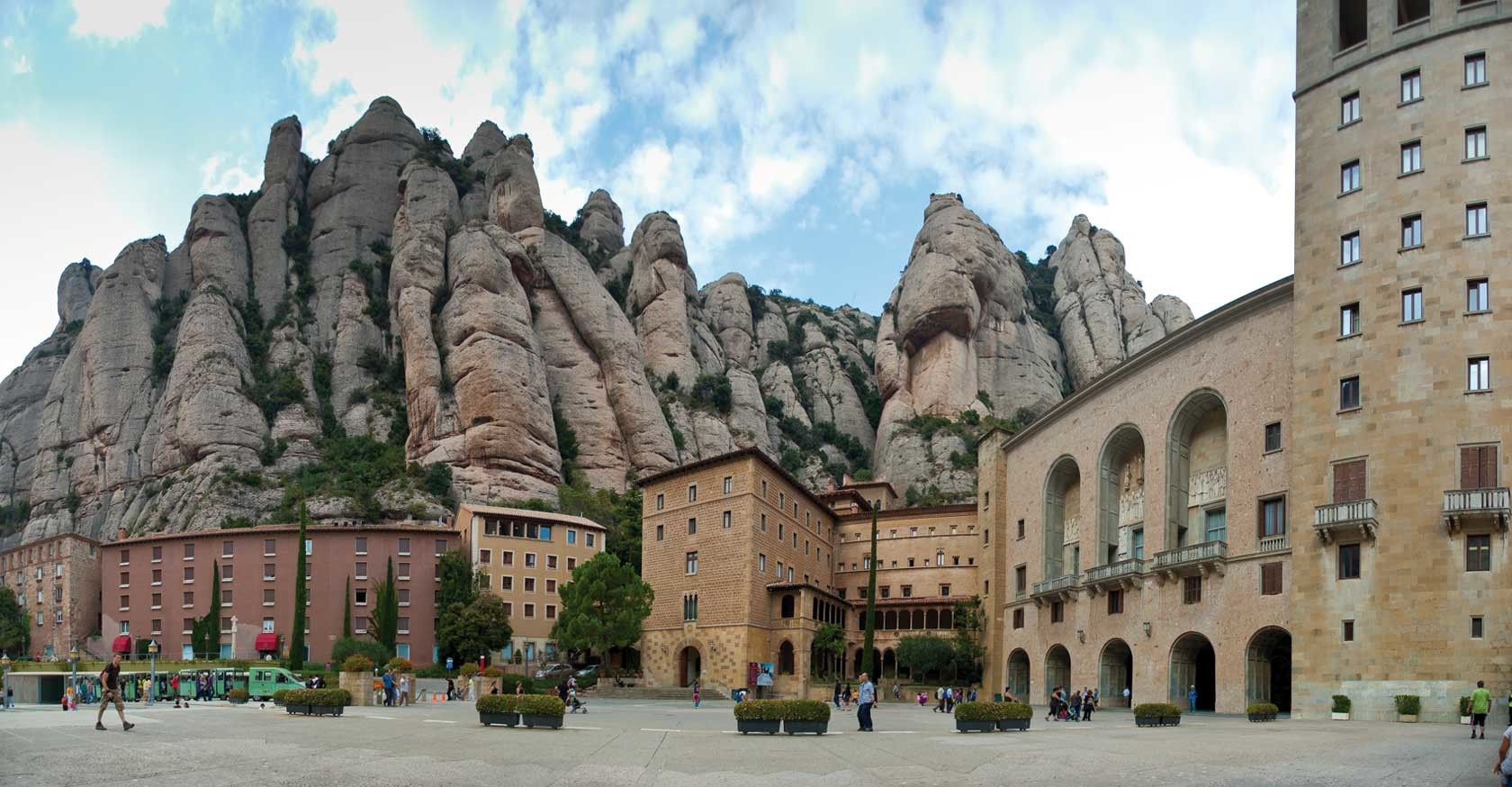
And so far, so good: a monastery with hundreds years of history, a misterious holy statue (which has become the new patron saint of Catalunia), an astonishing natural environment. So what is the problem of Montserrat? As far as I seen, the problem is the miserable transformation the place has gone through, thanks to, as always in these situations, the longing for money which too often is peculiar of human actions. Far from being preserved in its original beauty indeed, the monastery of Montserrat and its surroundings have been devasted by a savage process of construction and turistic exploitation. After a pleasant climbing to the monastery (about 700 metres above sea level), the visitor won't be we overwhelmed by a quite and charming landscape, but instead by the unpleasant view of horrible cement buildings, quite ugly. A big car parking, the upper funicolar railway station, a restaurant, an hotel and a turist office complete the slaughter...in conclusion, an endless sequence of buildings that prevent the visitor to appreciate the view and enjoy the (supposed) feelings of spiritual elevation.
Obviously, all these turistic equipments, together with the funicular railway that allows people to reach easily the monastery, make Montserrat a very convenient place. As a consequence, floods of people usually invade Montserrat during sunny weekends, making even more difficult for the visitors to enjoy the atmosphere. Personally, I believe things could have been managed much better, but as the renowned english proverb... money matters!
Anyway, since there is no room for regrets, the best thing to do is trying to highlight the positive aspects of Montserrat, which are actually still remarkable. Once the above-mentioned sequence of buildings is passed, you can find the path that brings to the monastery. Naturally, the original chapel has been replaced by a majestic church. Needless to say that is necessary to buy an entrance ticket (from 6 euro) to enter the sanctuary where the statue is preserved. A similar price is required to enter the near Museu de Montserrat, which I personally didn't visit but which should host an interesting series of holy icons, altarpieces and paintings. An excellent way to appreciate the sanctuary (or at least try to do it) is to start your visit in the early morning, before the mass of turists will arrive.
However, the sanctuary isn't (or at least is not anymore)the most fascinating part of Montserrat. If you are looking for part of its original charme, in fact, it's possible to reach the place where the statue was originally found, called Santa Cova (holy cave), which now houses a small chapel and a copy of the original statue. Even though also here is available a cable railway to arrive, is probably worth it to walk over the path which offer some amazing view of the surrounding mountains. Another sequence of pathways climb up to the peaks that overlook the sanctuary (about 1000 metres above sea level), the highest of those is called Sant Jeroni. Having reached Montserrat by bycicle, unfortunately I couldn't try this experience, which is probably the only way to escape from the crowd of tourists.
Photo gallery
Content available in other languages
- English: Un luogo di contraddizioni
- Español: Un lugar de contradicciones
Rate and comment about this place!
Do you know Montserrat? Share your opinion about this place.























